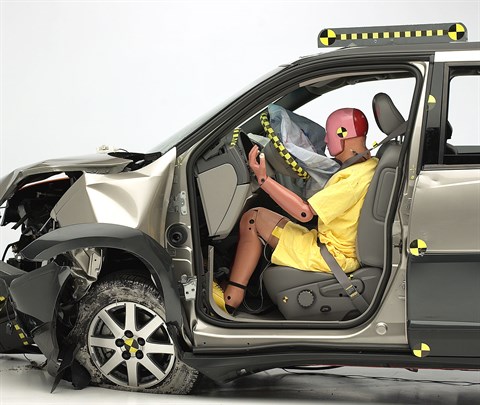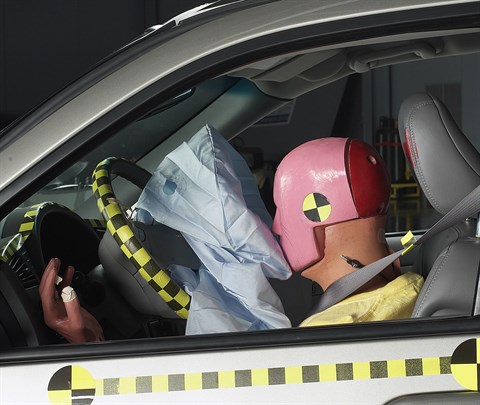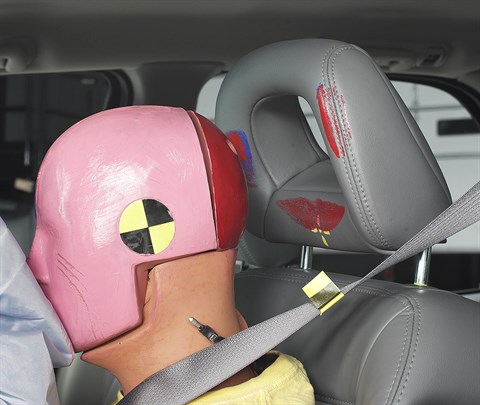Moderate overlap front: original test
Rating applies to 2002-07 models
Tested vehicle: 2002 Buick Rendezvous CXL 4-door 4wd
The Buick Rendezvous was introduced in the 2002 model year.
| Evaluation criteria | Rating |
|---|---|
| Overall evaluation | |
| Structure and safety cage | |
| Driver injury measures | |
| Head/neck | |
| Chest | |
| Leg/foot, left | |
| Leg/foot, right | |
| Driver restraints and dummy kinematics Dummy movement wasn't well controlled. There was far too much upward movement of the steering wheel and at the same time the driver's seat pitched forward toward the wheel. During rebound, the dummy's head did not come close to any stiff structure that could cause injury. | |

Action shot taken during the frontal offset crash test.

The dummy's position in relation to the steering wheel and instrument panel after the crash test indicates that the driver's survival space was maintained reasonably well.

The steering wheel moved upward far too much during the crash and the seat pitched forward.

Smeared greasepaint indicates that the dummy's head hit only the head restraint during rebound from the airbag.
Technical measurements for this test
Head restraints & seats
Seat type: All seats
| Overall evaluation | |
|---|---|
| Dynamic rating | |
| Seat/head restraint geometry |
Technical measurements for this test
About the head restraint & seat test
Currently, IIHS tests apply only to front seats.
